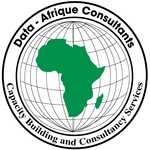|
|
Protecting Children's Health In Emergency And Disasters Training
USD 2,950 |
Venue: Nairobi
Although many emergencies and disasters are often unpredictable, much can be done to reduce their health impact by reducing the risks and by strengthening the response capacity of communities at risk.
Population growth, expansion into previously uninhabited areas and environmental degradation have all increased the exposure of most countries to natural hazards including cyclonic storms, floods, and famine, while exposure to hazards such as earthquakes and tsunamis is ever-present in many regions of the world.
According to the WHO Global Health Survey, the most common types of emergencies in surveyed countries were caused by floods, earthquakes, and severe storms, including snowstorms.
More than half of the respondents did not recognize the near-universal exposure of human populations to technological hazards in the 21st century. This suggests a need to adopt an “all hazards” approach to national health emergency preparedness and response policies and programs, utilizing generic arrangements that are suitable for any type of emergency or disaster, given the diverse nature of the reported natural hazards experienced in the last.
COURSE OBJECTIVES
At the end of this course the participants will be able to:
- Understand capacity of the health care team
- Understand health care of children up to 12, with special focus on children under 5 years of age, in disaster situations.
DURATION
5 days
WHO SHOULD ATTEND
The focus of the training will be on training health care personnel (general pediatricians, family and general medicine physicians, other health care professionals – nurses, psychologists, paramedics, technicians, health assistants, nutritionists, social workers and support personnel).
COURSE CONTENT
Module 1:
- Training introduction module
- Background of the course (role of the professional)
- Goal
- Objective
- Methodology
- Outcome
Module 2: Basic Concepts in disaster management
- Definitions
- Connection to the focus: children (include examples in each definition) Correlation examples
- Classification:
- Disaster Management and Risk Management
- Differences children-adults
Module 3: Disaster Impact
- Public health impact in general: prevalence rate, incidence rate, crude mortality rate, crude fatality rate
- Public health impact in children: immediate (death, injury, mental health), medium (common illnesses, mental health), long term (nutrition, communicable diseases, disability and mental health)
- Environmental health
- Myths and realities
Module 4 – Immediate response
- Initial assessment
- Damage and need assessment
- Emergency health information management
- Leadership in crisis
- Coordination and planning
Module 5: Trauma and injury
- Mass casualty management: pre-hospital, hospital and triage.
- Search and rescue, evacuation and first aid
- Immediate Medical Response:
- General assessment
- Paediatric assessment triangle (PAT)
- Paediatric triage
- Pre-hospital: Impact zone, advanced medical post,
- transport;
- Hospital triage (re-evaluation)
Module 6: Communicable diseases
- Threat of communicable diseases
- Outbreak, epidemic, endemic, pandemic.
- Early warning of diseases
- Outbreak control
- Vector control
- Surveillance
- IMCI
- Immunization
Module 7: Mental health
- Risk factors
- Vulnerabilities
- Common psychological impact
- Interventions
Module 8: Nutrition
- Infant and young child feeding
- Assessment
- Interventions: Feeding programs
- Malnutrition and specific deficiencies
Module 9: Neonatal care
- Prenatal care for pregnant women
- Recognition of high-risk pregnancy and delivery
- Labor and delivery?
- Immediate newborn care
- Neonatal resuscitation
- Routine postnatal care
- Danger neonatal signs
- Jaundice
- Febrile neonate
- Congenital infections
- Stabilization and Transport
Module 10: Children with special needs
- Disabilities
- Diabetes, epilepsy, and asthma
- School age and adolescents
Module 11: Recovery
- Lessons learnt
- Risk reduction
- Emergency preparedness
- Capacity building
GENERAL NOTES
- This course is delivered by our seasoned trainers who have vast experience as expert professionals in the respective fields of practice. The course is taught through a mix of practical activities, theory, group works and case studies.
- Training manuals and additional reference materials are provided to the participants.
- Upon successful completion of this course, participants will be issued with a certificate.
| Nairobi | Dec 09 - 13 Dec, 2024 |
Class Session: 08:00:am - 04:00:am
| USD 2,950.00 | (Kigali) |
| USD 4,500.00 | (Dubai) |
| USD 1,500.00 | (Nairobi) |
| USD 1,500.00 | (Mombasa) |
DUNCAN KARIUKI +254723360025
Tags: |
Protecting Children's Health Emergency Disasters Training nurses psychologists paramedics technicians health assistants nutritionists social workers and support personnel |
Related Courses
 Mobile Data Collection Using Ona and Kobo Toolbox
Mobile Data Collection Using Ona and Kobo Toolbox
5 days, 09 - 13 Dec, 2024
Data-Afrique Consultants
 Training Course On Project Management For Development Professionals
Training Course On Project Management For Development Professionals
5 days, 09 - 13 Dec, 2024
Data-Afrique Consultants
 Training Course On The Importance Of Situational Awareness
Training Course On The Importance Of Situational Awareness
5 days, 09 - 13 Dec, 2024
Data-Afrique Consultants






